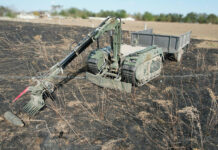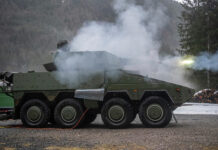BAE Systems is responding to the growing demand for military unmanned air vehicles with the establishment of a Global UAS Strategy Team, headed by Mark Kane, who leads the Company’s UK UAS activities, is pursuing several new opportunities for unmanned systems, in military and civil applications. “Conflicts in Afghanistan and Iraq are proving that many dull, dirty and dangerous operations can be done by unmanned systems and using them means people are kept out of harm’s way.” said Kane.
Kane argues that forecasts in recent years have consistently underestimated the growth in the market, but the current belief is that within five or six years, BAE Systems’ current customers will be spending $10 billion a year on military unmanned air systems. He emphasizes BAE Systems’ leadership position in advanced UAS technology, particularly with regard to autonomous operations. “We have skipped a generation and whereas most current UAVs are remotely piloted or have some automatic functions, ours are fully autonomous. They can take off, undertake a mission, identify targets and come back entirely on their own.” says Kane.
Another aspect of BAE Systems’ UAS is the small ‘footprint’, meaning UAS are operated, maintained and supported by fewer people and support systems. In fact, the Herti UAV just completed deployment in five countries, operating with a number of air forces, fully integrated in operational air bases and supported by a mobile, self contained ground facilities, control and communications systems including unique ‘reach-back’ to the UK, where imagery and flight data could be processed in near-real time. The strength of BAE Systems UAS in rapid prototyping is demonstrated in the Mantis program. “Being able to bring a technology demonstrator such as Mantis from a blank page to flying aircraft within 15 months, such a short cycles is unheard of with manned aircraft”. Kane told Defense Update.
It is Mark Kane’s belief that even with the recent growth in the UAV market, the greatest opportunities will come from 2010, when existing equipment begins to reach the end of its life and a new round of procurement decisions will be necessary. The challenge for BAE Systems, he concedes, is to understand now how BAE Systems can best leverage its global capabilities and position itself to take advantage of the business opportunities that become available.












